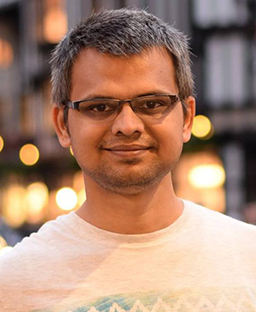 AstroFIt 2 – COFUND fellow since August 1, 2019.
AstroFIt 2 – COFUND fellow since August 1, 2019.
Project ended on January 26, 2020.
INAF Research Centre: Osservatorio di Astrofisica e Scienze dello Spazio
Email: dhiraj.hazra at inaf.it
Papers/Publications:
-
Constraints on features in the inflationary potential from future Euclid data (MNRAS, 19/6/2020)
-
Generating PBHs and small-scale GWs in two-field models of inflation (Journal of Cosmology and Astroparticle Physics, 3/8/2020)
-
Joining bits and pieces of reionization history (Physical Review Letters, 12/8/2020)
-
Generating primordial features at large scales in two field models of inflation (Journal of Cosmology and Astroparticle Physics, 12/8/2020)
-
Extended reionization in models beyond ΛCDM with Planck 2018 data (Journal of Cosmology and Astroparticle Physics, 1/9/2020)
Project title: TFCELSSU – Tracing fingerprints of cosmic evolution in the large scale structures of the Universe
Abstract:
Starting from the big-bang, our Universe has gone through several phase transitions that defined its evolution with time. Cosmic evolution left its fingerprints in the photons at different epochs. The large scale structures (LSS) that we observe today, contain the information of the primordial quantum fluctuations during the inflation and the history of the formation of structures. With the Cosmic Microwave background (CMB) data from satellite and ground based surveys, we have been able to constrain the standard model of the cosmic evolution along with the spectrum of the primordial fluctuations. However, we are still some distance away from understanding a significant part of the evolution since the CMB principally informs us about the linear fluctuations at around a redshift of 1100 and the formation of the LSS are recent and non-linear phenomena. Euclid, a European Space Agency mission, scheduled to launch in late 2020, is designed to probe the LSS of the Universe by detecting nearly 1.5 billion galaxy images and 50 million spectra beyond redshift 1. This proposal is aimed towards the preparation of the methodology and numerical tools for the analysis of the forthcoming Euclid mission data. We mainly focus on three major
goals. Firstly, using the matter power spectra at different redshifts, we prepare the platform to constrain the nature of dark energy using both model analysis and direct reconstructions. With the cross-correlation of the LSS and CMB data, using both two-point and three-point correlations of perturbations, the next goal of our project is constraining the primordial initial conditions. Since the LSS contain information regarding the initial conditions and the cosmic evolution in a convolution, it is evident that there are strong degeneracies between the primordial physics, cosmic evolution and late time non-linear structure formation. Our final goal is to develop the formalism and the numerical setup in order to break these degeneracies with the evolutionary fingerprints in different observations.
